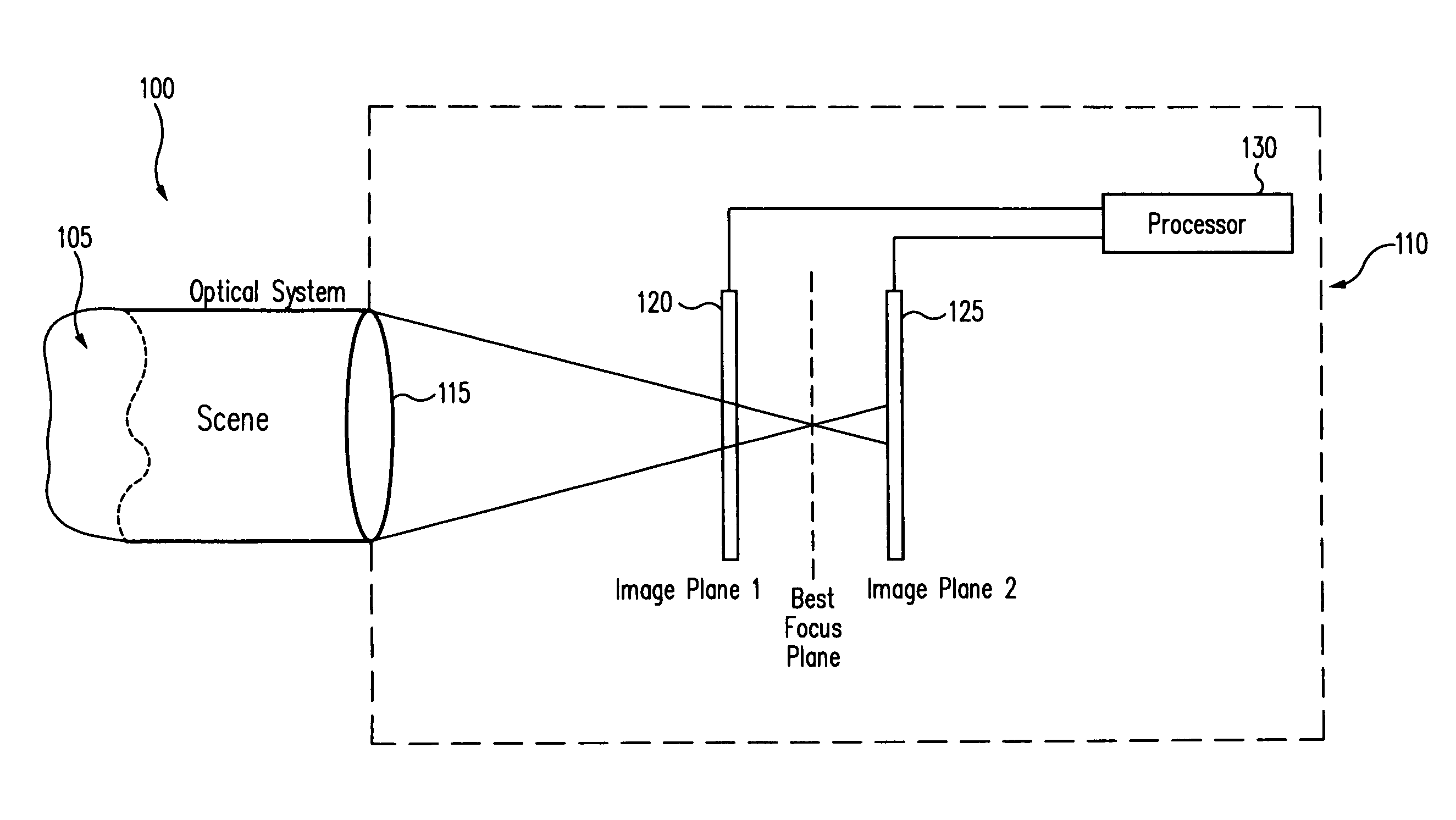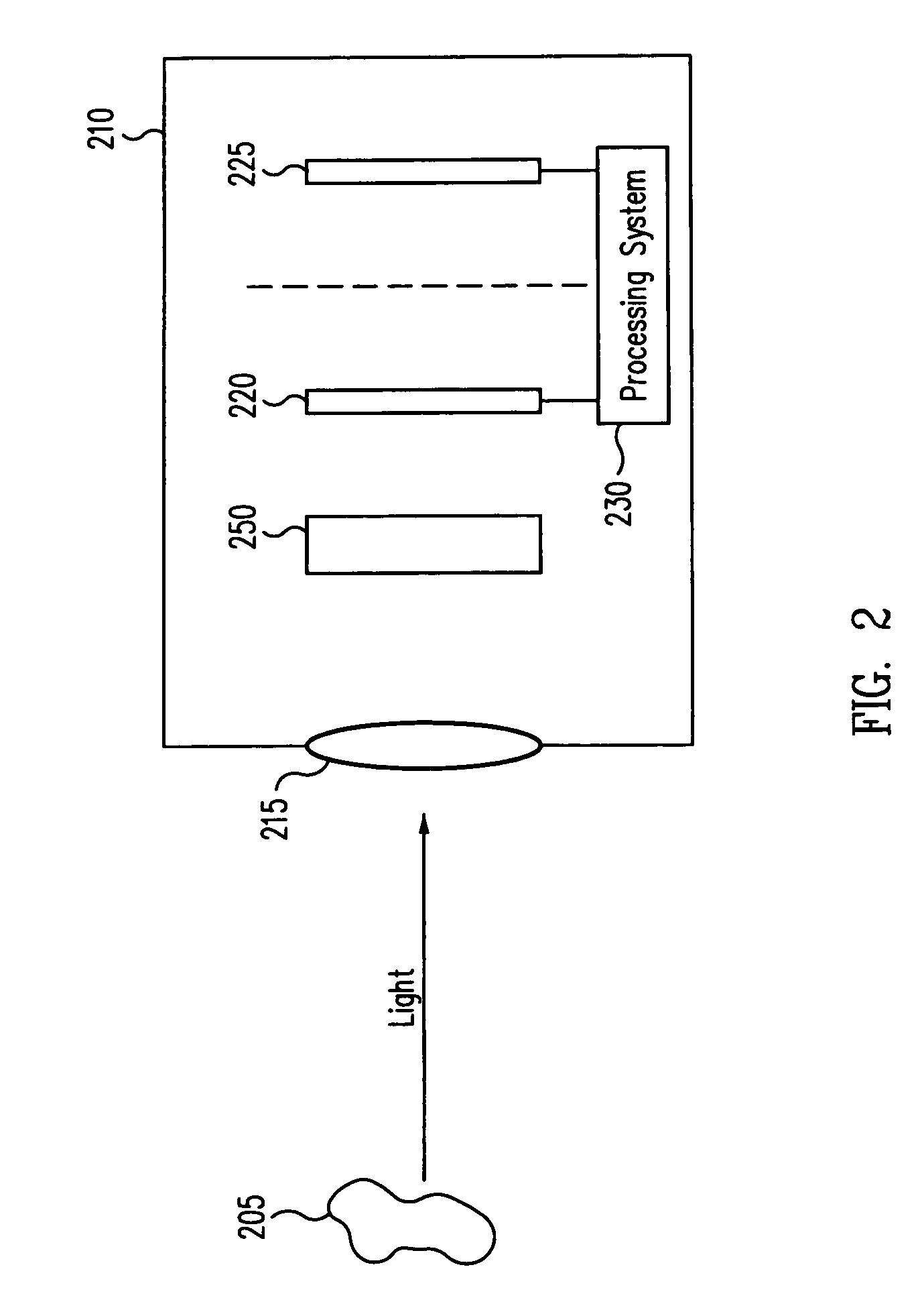Phase diversity ranging sensor
a technology of phase diversity and distance measurement, applied in the field of distance determination, can solve the problems of difficult to determine the distance (range) to an object in space, existing systems may be unduly complex or cumbersome, and achieve the effect of efficient and accurate distance determination
- Summary
- Abstract
- Description
- Claims
- Application Information
AI Technical Summary
Benefits of technology
Problems solved by technology
Method used
Image
Examples
Embodiment Construction
[0028]Systems and techniques provided herein allow for accurate measurement of distances in the meter to kilometer range. The systems may be incorporated into existing camera systems, and require significantly less power than laser and radar ranging systems. Thus, they may be beneficial for applications in which power is limited, as well as applications in which size is important. Additionally, because of their relative simplicity, the techniques may be implemented at low cost.
[0029]Embodiments of the current invention use phase diversity to determine the distance to an object of interest. In some prior art systems, phase diversity imaging is used to counter-act the affect of aberration on image quality. FIG. 1 illustrates a simple system 100 for image processing using phase diversity.
[0030]An object 105 is at a distance D from an optical system 110. Note that FIG. 1 is not shown to scale; for example, D is much larger than the relative separations of elements in optical system 110....
PUM
 Login to View More
Login to View More Abstract
Description
Claims
Application Information
 Login to View More
Login to View More - R&D
- Intellectual Property
- Life Sciences
- Materials
- Tech Scout
- Unparalleled Data Quality
- Higher Quality Content
- 60% Fewer Hallucinations
Browse by: Latest US Patents, China's latest patents, Technical Efficacy Thesaurus, Application Domain, Technology Topic, Popular Technical Reports.
© 2025 PatSnap. All rights reserved.Legal|Privacy policy|Modern Slavery Act Transparency Statement|Sitemap|About US| Contact US: help@patsnap.com



